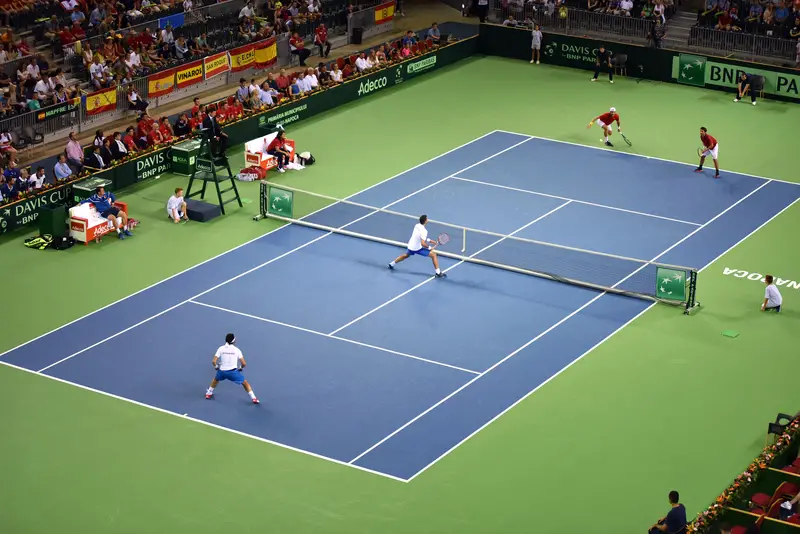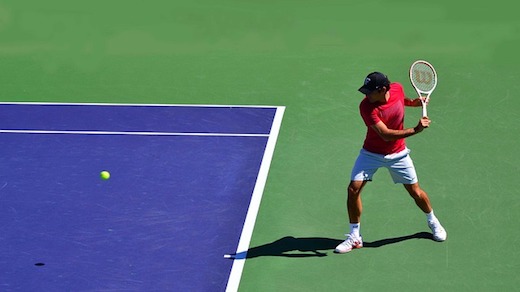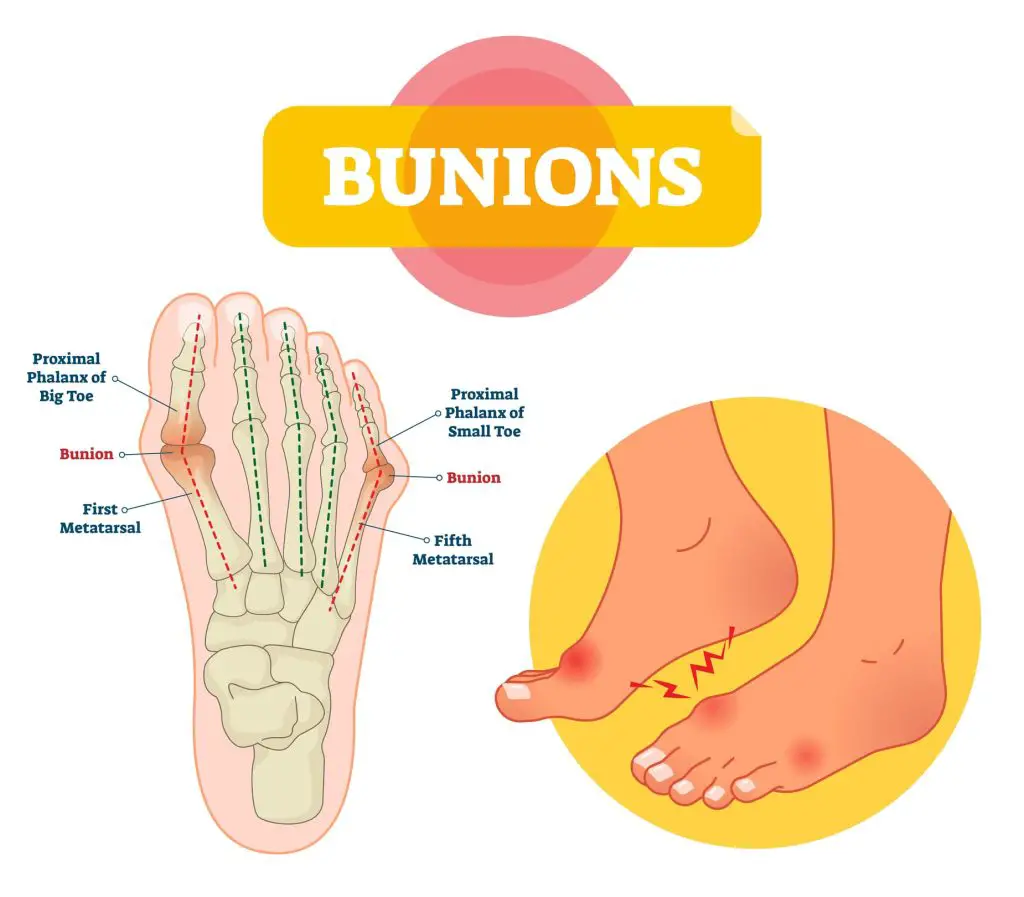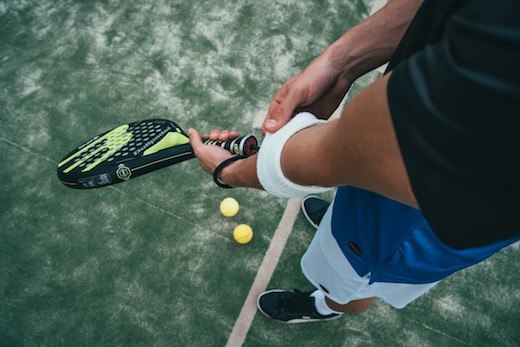- When You or Your Partner Gets Lobbed
- As a Strategy Following an Aggressive Serve
- When Taking an Ambitious Poach
Your Guide
 Gavin Davison
Gavin Davison
Doubles is obviously a slightly different game from singles when it comes to competitive tennis.
The formations are different, the skillset to be a great player is different, and the roadmap for success is VERY DIFFERENT from singles.

In my opinion, it’s almost like a new sport at times, which is why great singles players aren’t always great doubles players.
And one of the most misunderstood elements of doubles is when to actually switch sides during a point.
After all, you and your partner are each responsible for one-half of the court, unless this all changes!
Switching sides in doubles can happen by choice, or you might be forced to do it, such as when you or your partner gets lobbed.
Check out this video to see just how frequent switching sides is at the highest level:
Now, these are the two underlying reasons for switching sides, but there are certain situations where switching sides is more appropriate than others.
On that note, I’d like to talk about these situations in more detail right now.
Switching Sides Explained
As I’ve stressed above, in a typical doubles point, you and your partner will start off by covering one-half of the court.
Each of you will be set on either the Deuce or Ad side of the court, and this is true when serving and returning.
But while this is the standard formation, there are a number of situations where switching IS APPROPRIATE.
So with that cleared up, let me share some finer details on these scenarios right now.
Getting Lobbed by Your Opponents
Regardless of whether you are serving or returning, your opponents could lob you in order to take back the net.
For example, let’s say that you are the net player while your partner is serving.
If your opponent chooses to switch things up, they might lob the ball over your head.
Now, unless you can take the ball out of the air and hit it as overhead, the ball will ultimately bounce in the back half of the court.
This then puts you and your partner in a defensive position, unfortunately.
And since your partner must scramble to the other side of the court to retrieve the ball, it is now logical to switch sides.
Just note that your opponents may then both be at the net, or the person who hit the lob might stay at the baseline.
If they both come to the net, you should retreat back to the baseline, as this is the best way to neutralize the point.
Switching After a Big Serve
At the highest level in doubles, you might see a fair bit of chatting going on before someone actually serves.
Believe it or not, there is a METHOD TO THIS MADNESS.
The first thing that a great pair will talk about is where the server plans on hitting the ball.
Secondly, they will discuss whether the player at the net will switch on the first ball or not.
For example, if the pair agree that the serve will be hit down the T and that the net player will switch, this is an aggressive strategy in which the pair will switch sides immediately.
Doing this does open up the alley return, but that’s why the pair will make sure they are on the same page to cover all angles.
Of course, this doesn’t just happen following a T serve either.
It can happen when serving at the body, or following an Australian-style formation.
And at the very least, switching sides immediately following a serve does make the returners start to think and question where they should be hitting their return.
Coming Across to Poach
Unless you are switching sides following a lob, most of the time, switching sides is done with the intention of the net player claiming a poach.
In case you are unsure of what a poach is, this is an action done where the net player comes across to either the middle line or the other side to cut off the volley.
Of course, the reason for doing this is to hit an attacking volley and hopefully win the point.
Now, poaching won’t always mean that you have to switch sides, but there are two key situations where this is appropriate.
Firstly, if you and your partner are both at the net, should the player closer to the net come across to take the volley, the court behind them will be exposed.
That’s where the player further back must quickly switch across to cover the space.
Secondly, if there is just one player at the net, should the poach require the player to come all the way over the centerline, usually on a higher volley, it’s then appropriate to switch sides.
This is the case regardless of whether you are poaching with a forehand or a backhand volley.
And ideally, you should be taking the poach and aiming at the feet of the net player on the opposing side.
Alternatively, you could steer the volley straight up the middle and then look for the NEXT VOLLEY.
It’s completely up to you, and it does somewhat depend on the situation.
Conclusion
As you’ve now seen from the information above, switching sides can be both a defensive and attacking strategy.
When forced to do so, this is when you might want to neutralize the point by putting a lob of your own up there.
But if this is done intentionally, make sure that you take full advantage and put the POINT TO BED!
And to conclude, switching sides may feel a little strange at first unless you are an experienced player.
However, I highly recommend that you stick at it, and eventually, switching sides and when to do so will become SECOND NATURE.
At this point, you’ll find that the quality of your doubles significantly improves too.
Has this information helped you to understand when to switch sides in doubles?
Let us know in the comments if so.



